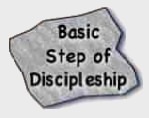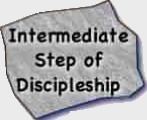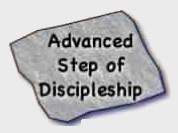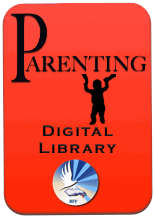

Godly Beginnings for the Family
Paul and Linda J. Bucknell
Godly Beginnings for the Family Index
Starting Families Right | Family Commitment | Family Planning | Husband & Wife Roles | Family Health Plan | Preparations for Childbirth | Tender Newborn Care | Challenge of Child Training | Disciplining & Training Small Children | Setting up Godly Routines
Training & Care Routines for Small Children
Purpose
Training & Care Routines for Small Children is part #8 of Godly Beginnings for the Family series which defines, illustrates and shows how to set up effective routines for more effective training and time saving devices for the parents.
Learning how to care for infants, before, during and after birth!
Contrary to what you hear, parents have a great impact on their child. God made it this way. The parent is to “train up the child in the way he should go.” He is not to let his child become who he is naturally.
The sin nature along with ignorance will lead all untrained children into ungodliness and the expression of his foolish heart whether or not he frequents a church. Ungodliness always brings ugly consequences.
 As parents, we desire to give our children a comfortable life and all the good things that God has bestowed upon us. However, by indiscriminately giving our children all the things that their little hearts desire, we inadvertently create a problem.
As parents, we desire to give our children a comfortable life and all the good things that God has bestowed upon us. However, by indiscriminately giving our children all the things that their little hearts desire, we inadvertently create a problem.
By giving our children many privileges, possessions and freedoms they become spoiled and our quest to raise godly children is frustrated. If we are not careful to train the child in the right way very early on, we are actually training him to go the wrong way.
Good parents persevere in properly training their children. When they train their children properly, then they will lessen the effects of evil. Proper training will always include both discipline as well as instruction. Unfortunately, some parents tend to neglect the aspect of physical discipline. We should not be afraid to discipline. Notice the impact that the affliction has on this person.
Before I was afflicted I went astray, but now I keep Thy word. (Psalm 119:67)
It is good for me that I was afflicted, that I may learn of Thy statutes. (Psalm 119:71)
God even uses affliction (pain, suffering, difficulty) to help us live the best possible life. Without it, we will go astray. As this is true for us, so it is true for our children. When our children learn to fear physical correction, it helps keep them safe and gives them a good attitude for learning.
A) Understanding the Training Process
Let’s review what we learned about discipline from the last session. Discipline is often associated with keeping a child from doing something harmful or potentially dangerous. We want to keep them away from something they shouldn’t touch. For example, we do not want our child to explore a dangling cord for fear that playing with it could bring a lamp down on top of them.
We use our verbal ‘no’ along with a slight tap from a little branch (rod) to help them obey our ‘no.’ When the child is small, there is momentary pain associated with the rod. The better job we do, the less we will need to use it later on in life.
The presence of the rod, though, will help the child comply with the parent’s instruction. We will focus on how to properly instruct and train a young child in this last session.
The manner that we instruct our child to do things will vary dependent on how old the little one is. We just need to remember that all the things we do for them early on will become natural to them. It will become a way of life. Let me give you a simple example. A baby about 6 months old is learning to use his hands to grab at things.
We want them to learn that there are some things that are off limits. We know later when they are mobile, that they will pull at all sorts of things. They want to see what happens when they pull something. At this age, however, they are hardly conscious that they are even grabbing. It doesn’t matter if they are conscious on whether it is right or wrong, harmful or helpful. But because we don’t want them to do it, we are motivated to train them here on this point.
The parent simply takes the child’s hand off his parent’s glasses and says a firm ‘no.’ He then either thump the child’s hand with his forefinger or can tuck the child’s hand under his arm so he can’t move it. The child is learning that there are things that are off limits.
He does not like his hand restrained. He remembers the negative consequences of grabbing glasses. It might take him a few times to make the connection. It depends on how old he is. So we can be patient and train him. After a while, he will make the connection.
Wasn’t that easy to train him? Why? Because he was little. It took a simple situation, using a kind voice and a little effort, to restrain his hand. But the baby learned from the repetition. What has the child learned?
-
The child has learned that the Mom’s ‘no’ means don’t do it.
-
The child has learned that there are negative consequences associated with Mom’s ‘no.’
-
The child has learned that when he hears Mom’s ‘no’ and stops doing it, then there is no negative consequence.
-
The child on a broader scale is learning that there are things in this world he is not allowed to do.
-
The child learns that if he doesn’t get his way, life is easier and even better (no consequence).
-
The child is learning to respect and obey his authorities.
The wise parent chooses neutral (as much as possible) situations for training. The child is just being a child. But the child still needs to learn that he cannot do everything freely. At other times, the child will still insist on his own way. The parent must follow up immediately.
If the child is young, the parent accompanies his ‘no’ with a thump from his index finger. Later it will be a slight tap from the rod. Later on it will be a sting on his leg or hand with that same rod.
We want to train the child to obey us the first time we give him instructions. Is this not what God wants? When we read His Word, does He not mean for us to obey? Sure. So this is the way we train our own children. Proper training keeps them from the worst and provides them an opportunity to obtain the best. We want to go on and discuss how routines fit into the young child’s life.
B) Training Routines into the Child
God made us creatures of habit. What we are used to, we get familiar with and tend to like and therefore repeat. A routine is a regular way of caring for a child so that the child learns how to properly conduct life on his own. By repetition we build the cycle of expectation, reward and familiarity. Notice how we see this in the suggested infant routine that was discussed in an earlier session.
ORGANIZATION HELPS MOTHER AND STABILIZES THE CHILD Note the constant repetitive pattern here. The baby begins to expect these things and therefore learns to wait and trust. The baby learns also that it conforms to the schedule that others organize and that he needs to conform. These attitudes and approaches to life are the basic building blocks to having self-control. |
DISORGANIZATION CONFUSES MOTHER AND CHILD Without the organization of life, the child becomes impulsive. The child only gets things when he cries for it. If the mother doesn't come quickly, the baby will cry louder until she does. These babies are demanding and are conditioned to having others work around his own demands. This is the opposite of self-control. |
What happens is that the child learns confidence (faith) in what should happen. As their motor skills develop, they gain confidence that they themselves can do the same things. They want these things to happen. They do not question whether or not to brush their teeth, take a bath, sit still to eat, pick up toys, etc. because they are already used to it. Their first ambition is to do it themselves.
ROUTINE
 Repetition is doing things the same way over and over again with or for the child.
Repetition is doing things the same way over and over again with or for the child.
Order refers to the logical series of activities that connects routines.
Unified is a whole series of mini-routines that are combined into one concept such as ‘clean-up time.’
Training speaks of the way we step by step over time enable a child to carry out the same pattern of activities on their own.
Instruct refers to the words that are used to tell the child how something should be done.
Nice is the kind and patient way the parent helps meet the child’s needs.
Enforce reminds us of the importance of consistency in carrying out consequences.
The biggest obstacle to setting up routines is the parent. There are two kinds of difficult parents.
1) Parents who do not believe the child should be constricted to routine.
We really feel for this child. The child does not learn to live by faith in what should be but by what they want. They are desire-dictated. That is, they only know how to get things that they want. They do not know how to do what is expected of them. If something is demanded from them, they put up a fuss. The parent learns to bribe them with a sweet to do what the parent wants. This child has no self-control (in the sense to do what is right or proper).
2) Parents who do not believe a child can be trained.
This parent simply does not believe the child can be trained. Since they believe that they can’t be trained the parent makes no effort to train the child. The parent has no faith (confidence) in the process or in the child. Therefore the child never learns. Sometimes the child wants to do things for himself, but the parent doesn’t have confidence in the child.
If any parent wants to learn how, they can train their child to do virtually anything that is age appropriate. Their mental, emotional and motor skills need to mature to a certain level to accomplish different activities. Some parents want their child to do something like crawling or talking early. Every child will naturally develop these skills; the parent can waste a lot of time trying to give the child a ‘head start.’ We are not talking about this kind of training. The child learns these things at the appropriate time.
Feeding, awake and sleep times are the first main areas of training. The baby needs to be trained. They will attempt to frustrate the best routine to satisfy their own desires if allowed. We have talked about some of these things in the previous sessions. Our teaching focused on how to keep them from doing wrong. Go back and read it if you have forgotten. We will focus on other specific instructions here.
Each routine is made up of various tasks. Let’s look at a couple of examples. Each discussion will start young and progress to the older.
 a) Brushing the teeth.
a) Brushing the teeth.
When the little child’s first tooth comes in, it is time to start the tooth brushing routine. When very little still, it is easy for the Mom just to quickly clean that one or two teeth. As the teeth come in, a brush will be used.
The Mom is to take the baby and hold him or her as she brushes the baby’s teeth. The baby might fuss but the Mom simply tells the baby ‘no’ and holds the baby’s hands. The child will get used to this.
When the child begins to get older, it will be obvious that the child will want to try brushing his own teeth. The regular routine has allowed him to build in this expectation and has given him the desire to be part of fulfilling it (be like a grown-up). The parent needs to gradually release the restraint. We do not allow the child to brush their teeth at once. They cannot do a proper job yet. Once they get the idea that they can do this, it is then hard to convince them otherwise. They will demand the full freedom and you will have a regular struggle.
Instead we take calculated steps. When the child looks able and motioning his interest, after brushing their teeth, you let the child hold the toothbrush and guide him in ‘brushing’ his teeth. Of course he cannot do a good job. You just help him to start practicing. Step by step you will give the child the opportunity to take part in of all the ‘brush the teeth’ opportunities.
The full mini-routine of brushing the teeth includes: go to the bathroom when told, reaching the brush, getting a small cup of water, wetting the brush a bit, putting a tiny bit of toothpaste on the brush, putting the tube back covered, brushing correctly, spitting out the toothpaste, taking a little drink of water, rinsing off the toothbrush, putting the toothbrush away in its proper place, putting the cup back and leaving the room for what is next.
The child just crawling or walking cannot do all this at first. Step by step we train with him. Our 5 year-old can do all of this well now except for reaching and putting away his toothbrush. It is a process. We do it with the child step by step until they have reached the ‘able’ point. Then they completely take over the mini-routine. We say it is time to brush the teeth and off they go. When the child is able to do the job he should be given the full responsibility to do it on his own.
b) Putting Clothes Away
First clarify the goal. We want the child to be able to put away his or her clothes properly after use. There are two aspects.
Dirty clothes. Dirty clothes are easy. Once the child can walk, they love to help deliver things. The first few times the Mom will accompany the child with the dirty clothes and drop them where needed. The problem in this case is helping the child to determine what is dirty. The child might start moving other clothes and things into the dirty pile! This can be avoided if you train the child to put the clothes away right after they take them off.
Folding Clothes. What about clothes that will be worn again such as pajamas? We should think about this routine along with its timing. For example, in the case of pajamas, he will first learn to take his pajamas off when he gets up and then properly put them away after he is dressed.
Folding pajamas might seem difficult but again it is not hard because the child sees it being done every day. When the child gets up in the morning, get them dressed and then right away fold the pajamas and put them away while they remain with you. As the child is able and seems motivated to start helping in the process, the parent will help him to start doing it. Perhaps the first part would be for us to fold it and then encouragingly say, “Go put your pajamas under your pillow or where ever you designate!” They will be  proud of their skill.
proud of their skill.
Then he will want to show his desire help with the folding. Perhaps at first the parent can do the first folds and just save the last one for the child. Then use your hand to help guide the little one’s hand to make the last fold.
Then he put his pajamas away. As his skills develop, he will do more of the folds with your guidance. As he learns to do a fold, then we excitedly say, “Now your turn to fold. Can you do it?” Then they do it. If they get frustrated, say something like, “Whoops,” or “Let us do it together,” and then take his hand and guide it to do it rightly.
The child will soon learn to be able to do it all by himself. He will be proud of his accomplishments. This is the full ‘put away the pajamas after he gets up’ routine. Now we need to make sure they do it consistently every day. Don’t let them get sloppy (just put the pajamas away without folding) or neglectful (doesn’t do it). The excitement at some point will wear off and they will refuse to do it. We know they are trained, however.
They have been doing a complete job. We usually only need to remind them of the rod, and the child will gain extra motivation right away in ninety percent of the cases and do it properly. If they still refuse, then we need to use the rod by slapping it across the legs with a little sting.
This ‘fold your pajamas’ subroutine soon will become part of a larger ‘getting up in the morning’ routine. Let’s look at another aspect of this larger ‘get up in morning’ routine.
c) Getting Dressed
The goal is to train the children to completely dress by themselves without being told. This is more complex and requires longer training.
 Repetition is the key trainer. The Mom needs to be with the child when he wakes up. At that point you will help him undress. The child has been learning all along how to cooperate when Mom helps take off his clothes.
Repetition is the key trainer. The Mom needs to be with the child when he wakes up. At that point you will help him undress. The child has been learning all along how to cooperate when Mom helps take off his clothes.
The same will be true when they are getting dressed. The child will learn to straighten out its arm so Mom can easily put it through the sleeve. When they start doing helpful movements, encourage them with a nice compliment like “Wow, I didn’t know you could do that!”
The child will learn to take off his pajamas on his own more quickly than to put them on. Once he gets dressed we will train him automatically to find his pajamas, fold them and put them away. Getting dressed will include training lots of skills. My youngest son is now just learning to button by himself. He sometimes asks me to do the top one and then he will do the rest.
Summer clothes are easier to learn to put on. The main point is that the parents first do all of the dressing. The child watches. Then the child will become able to help with one or two items. Sooner or later if we lay out the underwear for the child rightly flat on the floor, then the child can put it on correctly. We work with them. We let them do what they can. We help guide their hands to do new things and then do what they cannot do (like zippers and belts). Children are funny. You should see some of the configurations we have seen on our youngest daughter (2+) who loves to get dressed.
Godly Beginnings for the Family
Learning how to care for infants, before, during and after birth!
Click to order download (pdf) with study questions, footnotes, etc. or get the powerpoints and handouts.
Click here to view back cover! Smaller | Larger
Let me backtrack to infant days for a minute. The mom must establish a dressing routine that she follows day by day. Dress the baby in the same place; put things on him in the same order; dress at the same time each day, i.e.: always before breakfast or whenever you decide. Always use a pleasant voice when talking to him about the routine. Verbalize what you are doing.
d) The ‘Rise and Shine,’ morning, or waking routine
So we start training them in the mini-routines (putting pants on) so they can complete the subroutine (get dressed) so that they can complete the morning routine by themselves. The parent is to determine exactly what is included in this routine. We have suggested a guideline below. Do they wake up by alarm or by the parent’s call or on their own? The parents must decide. We leave very few decisions at this stage to the child’s wants.

-
Wake up (How does one wake up? Self, alarm, be called?)
-
Get up (How much time to actually get out of bed?)
-
Make Bed (Making the bed to Mom’s satisfaction).
-
Dress (Putting on the right clothes the right way).
-
Put away clothes (Putting away bed clothes and dirty laundry).
-
Hygiene (Toilet (mini-routine), brush teeth, hair, wash).
There are other routines too. Some of the examples will include: obvious things like ‘pick up’ routine, feeding, washing up. Notice the diagram on the right.
Some items we might tend to neglect. This might be how to welcome Daddy home or how to say goodbye to Dad and Mom when they go out for the evening. We can eliminate much conflict when we proactively think about these routines.
C) Proactive training
When we detect the areas that our children need training in, then we can train them in a neutral setting. A neutral setting means a situation in which there is no parent-child confrontation. In other words when we spot a difficult problem needing training, we will carry it out at some other time.
1) Training to Come without Fussing
If we are going to train the child to leave a friend’s home, it is best not to train them at their friend’s house. We would first do it at home. How? Let’s take a look at this.
Maybe after a little investigation, we discover three main things that our child does that we don’t like:
1) Takes a toy and wants to bring it home,
2) Refuses to help pick up what he played with, and
3) Cries when leaving to go home.
Once we determine where the chief problem is, we can first train him at home how to do it properly. This doesn’t mean everything will go smoothly when leaving his friend’s house, but it will help a lot. We know what to say to the child and how to further our training later. Meanwhile, the child is learning from us what to expect.
If the child has siblings at home, the child has more opportunities to practice at home because there are interrelationship issues. They will have to learn to share toys with their brothers and sisters. They will see their siblings share toys. But the parents still need to proactively train the child.
Train to return a toy
So plan a time when you will practice with them what you would like them to do. The parent makes up a game to trains the child on a day when things are going well. Let’s assume the child can walk. He can go over to a corner and pick up some toy or object.
The parent will tell the child where a ball is. The child will go get it and then bring and give it to the parent. So Daddy and Mommy play this ‘game’ with their child. In it the child is associating the giving up of the toy with fun. There is reward to it.
Explain to the child that when they go to a friend’s house, they need to give the toy up. But don’t spend much time on the last thought. Just do it several times. Before you go over to the friend’s house, remember to remind the child that if he has a toy in his hand, that he needs to give it back before he goes home.
Train to put away toys
If we have trained our child to pick up toys at home, then they should not have a problem picking up toys away from home. Several problems can occur. The host parent might not want any toys picked up. They might be polite which means we should start picking up or they might be ignorant that children can pick up after themselves. We should probably help out a little then with the child. Other problems can arise too.
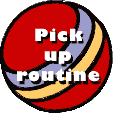 The child might not know where things go in another’s house. We need to help them find out so they can put them away. Or they just might be overwhelmed if the whole room is in a mess. Too many toys were taken out. I think this is a parental problem rather than a child problem. We cannot expect our child to pick all that mess up. We will ask our child to pick up a portion of the mess.
The child might not know where things go in another’s house. We need to help them find out so they can put them away. Or they just might be overwhelmed if the whole room is in a mess. Too many toys were taken out. I think this is a parental problem rather than a child problem. We cannot expect our child to pick all that mess up. We will ask our child to pick up a portion of the mess.
Training a child to pick up toys at home is a process. We were more specific in the previous lesson. Start training the child from a very early age and they will know no difference. We first make everything neat around them. Secondly, when older we take their hand and put things away.
Thirdly, we allow them to put them away. Fourthly, we tell them it is ‘pick up time,’ and they put things away. Usually, if we train them at home, we only need to say, “Pick up time” and the child should just follow that routine. Every toy should have its designated place.
Train to return home without a fuss
The child cries when its time to leave. The parents are not to give into the child’s demands. This only makes it worse next time. If the child knows that fussing gives him ten more minutes, then they will fuss for another ten minutes. We need to train them so that when it is time to go home, they go along home without a fuss.
Children like to pretend. So we have our friend (in pretend form) over by the toy box. We tell the child we are going to play another game. He is going to play at his pretend friend’s house. When Mom calls, the child is going to say goodbye and then run over to where Mom is. (We need to remember that in real life that we don’t call the child to go home until we they first help pick up toys.)
The Mom can make the game a bit more fun by hiding a bit and saying things like, “You were fast!” or “Wow, what an obedient boy.” At the end tell him that when he is at his friend’s house, it is important that he comes right away without any fussing as soon as you call him. Make sure that you reward the child with a great compliment when he does it right.
By the way, it would be good for you to tell the parent about your training so that the parent does not help the child get his way when he wants to stay longer. Let’s look at another example.
2) Training to ask nicely (sign language)
One of the key areas children need training is their attitude. Many parents are very frustrated because they do not know what to do with that mean face or stubborn look. We simply explain to our children that we do not accept bad attitudes. If they are older, you can explain how God looks at our heart. But with a younger child, your words will not be understood.
The parents should be profuse in saying polite language. Does Dad say ‘Thank you’ for dinner? Does Mom say ‘Please’ when asking a child to do her a favor? Do Dad and Mom use nice voices when saying such polite words? Children do learn through example. But if we fool them for a while, later they will know the secret and get bitter at us (call us a hypocrite). We are polite and treat people politely because people are made in God’s image.
 We have formerly discussed in another session how a child will try to use his cry to manipulate the parent. But this is not the end. It is only the beginning! If successful, the child will then learn to use his whine to get what he wants. But even if the parents have not given into the baby’s cry, they still might be tempted to give into the baby’s whine.
We have formerly discussed in another session how a child will try to use his cry to manipulate the parent. But this is not the end. It is only the beginning! If successful, the child will then learn to use his whine to get what he wants. But even if the parents have not given into the baby’s cry, they still might be tempted to give into the baby’s whine.
A child often uses his whine to get legitimate things. At that point it might not have any negative attitude with it, but it is rather unbecoming. We suggest that the parents teach sign language to cultivate polite talk into the child before he can talk.
We first learned this from Gary Ezzo and have found it extremely helpful. The child is too young to speak, but they understand many things. The sign that we use for ‘Please’ is a small circle on the chest. The sign for ‘Thank you’ is to touch your lips with the front of the fingers of your right hand (with an open palm) and smile as you move your hand away palm upward.
Maybe you wonder how to teach your child sign language. It is not hard at all especially if you have trained the child to accept correction and instruction from you. They love to learn things. When the child wants something, we train them to do something first.
They need to say ‘Please.’ Of course, they can’t say it so we say the word and simultaneously take their hand in ours and draw a circle on their chest. They very quickly learn to associate the two things: the sign with the word. More importantly, they are putting in their lives something they do when they are asking for something. If children are sitting up, we can train them to do this.
The child will need to learn that a parent will sometimes say ‘Yes’ and sometimes ‘No.’ But they have learned the main lesson early on when they heard you say ‘No’ to different things and constrained their hand. Using sign language helps us to train in a better way. We can avoid much whining. If they start whining to get a drink of juice, the parent will simply remind them, “How do you ask?” Then they will sign ‘Please’ on their chest.
Handling Bad Attitudes
How do we handle bad attitudes? What do we do when we tell our 1 1/2 year old to put something down, but he meanly or stubbornly throws it down. He did what we asked, didn’t he? Yes and no. We must explain that his particular attitude is not acceptable in our home at any time. He put the object down, but he did it wrongly. I find it helpful to act out the two ways we can put it down.
• I make a stubborn face and throw something down.
• I happily say ‘Thank you” and put it down nicely where it belongs.
Later on, we should play a training game. But at that point we should just instruct him how to do it with a right attitude. We tell him the right words to say. Yes, the child probably cannot say them, but he can say it in his own way. Or better, give him a sign for “Okay Daddy.”
I would simply pick up the object, and explain he did not do it right. I would then show him the right way. As I put it down nicely I would say, “Okay Daddy.” Then I would instruct him to put it down and say, “Okay Daddy.”
At a separate time, it would be easy to play a game that had you do it the right way. The smaller children are, the more they love these games. Maybe we would put three objects in the chair. I would then tell the child what to do. Of course I would say it in a fun way since we are playing a game. When Daddy says put the play horse down, you need to get the horse, say ‘Okay Daddy’ and then put it down. If I say, ball, then say ‘Okay Daddy’ and put it down. Play the game several times. Siblings like to join in.
Remember that bad attitudes are associated with certain looks and murmuring words. We want to replace the dour face with a happy face and the noise with a bright ‘Okay Daddy.’
D) Schedules & Routines
Once these routines are configured, then they become a schedule. All we need to do is coordinate a time along with the routine. In this way the routine gets even more fixed, and habits are more deeply engrained because it happens the same time each day. This helps the parents as well as the children, especially when they are older and understand time. Punctuality is an important character quality that we want to develop in our children. Punctuality is keeping my word as to what time I will be there so that others are not inconvenienced but encouraged.
7:00 Rise and shine routine
7:30 Morning jobs (older children) & eat
8:00 Morning devotions
and so forth
But please remember that schedules and routines are to serve us. We need to occasionally remind our children that we can change schedules and routines because we made them. For example, if we regularly send the child to bed at a certain time, there might be a conflict with a special church meeting. We tell them that God is more important.
So we change the schedule for that day. Perhaps we would give the youngest children a nap. Or maybe adjust the length of the nap. They stay up late, and we may adjust the morning schedule with a later rising time. There must be flexibility built into the schedule.
Although it seems that the child without routines is more flexible, it is the opposite. The child that has learned to comply with the parent’s word can better adjust because he can trust the parent without a struggle. Furthermore, he has a regular schedule to get back into as soon as this segment is past.
Conclusion
We can train our child to do what we want. As parents we need to more clearly focus on God’s goal for our children. After all He will keep us accountable for the way we train our child. We need to be faithful in what He has given us to do.
The best thing is that when we nicely train our child, it is fun to be with him or her anytime or any place. We are setting up a great foundation for being best friends when that little one grows up. Praise God for His special Word that instructs us to properly train our children!
| This is the last of this series. For more information check out the following two series: If we haven’t discussed it here, then refer to the series ‘Principles & Practices of Biblical Parenting’ designed for parenting an older child. |
|
Or return to the index for Godly Beginnings for the Family!
Next =>Principles & Practices of Biblical Parenting
Learn why and how to train godly children! (Toddlers and up, including teens).Click the book to learn more about raising godly children!





